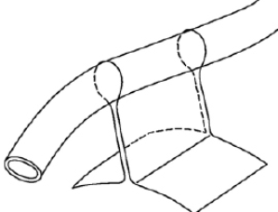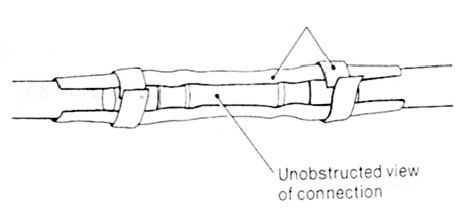Secure the drain and connections
The drain itself should be secured with a suture after insertion to prevent it from falling out. The chosen suture should be stout and non-absorbable (silk or prolene) and it should include adequate skin and subcutaneous tissue to ensure it is secure.
Commercially available dressings which fix to the skin and then attach to the drain may also be used. It should be emphasized that, whilst these dressings are useful for stabilizing the drain at the skin and preventing kinking at the skin surface, they do not replace the need to stitch the drain firmly in place.
The use of an omentum tag of tape or specific device (Flexitrak) is recommended as this allows the tube to lie a little away from the chest wall which will prevent the tube kinking and reduce the pain experienced by the patient due to tension or dragging at the insertion site.
The connections between the intercostal catheter and drainage tubing should be secured with non-stretch tape to prevent dislodgement. Taping should be applied to allow the connection point/s to be clearly visible.

Figure 6: The omental tape technique
Havelock T et al. Thorax 2010;65:i61-i76. Copyright © BMJ Publishing Group Ltd & British Thoracic Society.

Figure 7: Connecting intercostal catheter to drainage tubing
Insertion site dressing
Large amounts of tape and padding to dress the site are unnecessary and may restrict chest wall movement and/or increase moisture collection. A transparent dressing allows the wound site to be inspected by nursing staff frequently for leakage or infection. (See Figure 10: Insertion site dressing completed.)